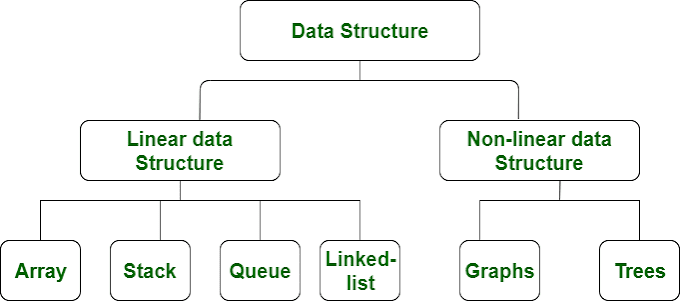Basics c programming language
OVERVIEW OF C PROGRAMMING
C language is one of the most popular computer languages today because it is a structured, high level, machine independent language. It allows software developers to develop programs without worrying about the hardware platforms where they will be implemented. C is called a high level, compiler language. The aim of any high level computer language is to provide an easy and natural way of giving a programme of instructions to a computer.
C is one of a large number of high level languages which can be used for general purpose programming, i.e., anything from writing small programs for personal amusement to writing complex applications. It is unusual in several ways. Before C, high level languages were criticized by machine code programmers because they shielded the user from the working details of the computer. The C language has been equipped with features that allow programs to be organized in an easy and logical way. This is vitally important for writing lengthy programs because complex problems are only manageable with a clear organization and program structure.
The increasing popularity of C is probably due to its many desirable qualities. It is a robust language whose rich set of built-in functions and operators can be used to write any complex program. The C compiler combines the capabilities of an assembly language with the features of a high-level language and therefore it is well suited for writing both system software and business packages. Programs written in C are efficient and fast. This is due to its variety of data types and powerful operators. C is highly portable. This means that C programs written for one computer can be run on another with little or no modification. Another feature of C is its ability to extend itself.
C is a remarkable language. Designed originally by Dennis Ritchie, working at AT&T Bell Laboratories in New Jersey, it has increased in use until now it may well be one of the most widely- written computer languages in the world. C is a structured language. It allows variety of programs in small modules. It is easy for debugging, testing, and maintenance if a language is a structured one.
Structure of c program
Include Header File Sections
C program depends upon some header files for function definition that are used in program. Each header file by default is extended with .h. The header file should be included using # include directive as given here.
Global Descretion
This sectiondeclares some variablesthat are used in more than one function. These variables are known as global variables. This section must be declared outside of all the functions.
Function Main
Every program written in C language must contain main () function. The function main() is a startingpoint of every C program.The execution of the programalways begins with the function main ().
Discretion Part
The declaration part declares the entire variables that are used in executable part. The initialisations of variables are also done in this section. Initialisation means providing initial value to the variables.
Executable Part
This part containsthe statements following the declaration of the variables. This part conatins a set of statements or a single statement. These statements are enclosed between the braces.
User Defined Functions
Steps for Executing a C program
1. Creation of program
Programs should be written in C editor.The file name does not necessarily includeextension C. The default extension is C.
2. Compilation of a program
The source programstatements should be translated into object programswhich is suitable for execution by the computer. The translation is done after correcting each statement. If there is no error, compilation proceeds and translated program are stored in another file with the same file name with extension “.obj”.
3. Execution of the program
After the compilation the executable object code will be loaded in the computers main memory and the program is executed.
CHARACTER SET
Letters | Digits | White Spaces |
Capital A to Z | All decimal digits 0 to 9 | Blank space |
Small a to z |
| Horizontal tab |
|
| Vertical tab |
|
| New line |
|
| Form feed |
Special Characters
| , | Comma | & | Ampersand |
| . | dot | ^ | Caret |
| ; | Semicolon | * | Asterisk |
| : | Colon | - | Minus |
| ' | Apostrophe | + | Plus |
| " | Quotation mark | < | Less than |
| ! | Exclamation mark | > | Greater than |
| | | Vertical bar | () | Parenthesis left/right |
| / | Slash | [ ] | Bracket left/right |
| \ | Back slash | {} | Braces left/right |
| ~ | Tilde | % | Percent |
| _ | Underscore | # | Number sign or Hash |
| $ | Dollar | = | Equal to |
| ? | Question mark | @ | At the rate |
Delimiters
| Delimiters | Use |
| : Colon | Useful for label |
| ; Semicolon | Terminates the statement |
| ( ) Parenthesis | Used in expression and function |
| [ ] Square Bracket | Used for array declaration |
| { } Curly Brace | Scope of the statement |
| # hash | Preprocessor directive |
| , Comma | Variable separator |
C KEYWORDS
Auto
Double
Int
Struct
Break
Else
Long
Switch
Case
Enum
Register
Typedef
Char
Extern
Return
Union
Const
Float
Short
Unsigned
Continue
For
Signed
Void
Default
Goto
Sizeof
Volatile
Do
If
Static
while
Auto
Double
Int
Struct
Break
Else
Long
Switch
Case
Enum
Register
Typedef
Char
Extern
Return
Union
Const
Float
Short
Unsigned
Continue
For
Signed
Void
Default
Goto
Sizeof
Volatile
Do
If
Static
while
Identifiers in c
Constant
Values do not change during the execution of the Program
1. Numerical constants
2. Character constants:
VARIABLES in c Programming
It is a data name used for storing a data value. Its value may be changed during the program execution. The value of variables keeps on changing during the execution of a program.
DATA TYPES in c Programming
| Data type | Size (Bytes) | Range | Format Specifiers |
| Char | 1 | – 128 to 127 | %c |
| Unsigned char | 1 | 0 to 255 | % |
| Short or int | 2 | – 32,768 to 32, 767 | %i or %d |
| Unsigned int | 2 | 0 to 655355 | %u |
| Float | 4 | 3.4e – 38 to +3.4e +38 | %f or %g |
| Long | 4 | = 2147483648 to 2147483647 | %ld |
| Unsigned long | 4 | 0 to 4294967295 | %lu |
| Double | 8 | 1.7e – 308 to 1.7e+308 | %lf |
| Long double | 10 | 3.4e – 4932 to 1.1e+4932 | %lf |
OPERATORS in c Programming
It indicates an operation to be performed on data that yields value.
Types
| Type of Operator | Symbolic representation |
| Arithmetic operators | +, -, *, /, % |
| Relational operators | >, <, ==, >=, <=, != |
| Logical operators | &&, ||, != |
| Increment and decrement operator | ++ and -- |
| Assignment operator | = |
| Bitwise operator | &, |, ^, >>, <<, ~ |
| Comma operator | , |
| Conditional operator | ?: |
Input AND Output
Reading data from input devices and displaying the results on the screen are the two main tasks of any program.
formatted Functions in c
The formatted input/output functions read and write all types of values
Input Output
Scanf() printf()
unformatted Functions in c
The unformatted input/output functions only work with the charcter data type
Input Output
getch() putch()
getche() putchar()
getchar() put()
gets()
It checks the given condition and then executesits sub-block. The decision statement decides the statement to be executed after the success or failure of a given condition.DECISION STATEMENTS
Types:
1. If statement
2. If-else statement
3. Nested if-else statement
4. Break statement
5. Continue statement
6. Goto statement
7. Switch() statement
8. Nested switch ()case
9. Switch() case and Nestedif
| Statement | Syntax |
| If statement | if(condition) Statement; |
| If-else statement | If (condition) |
| | { |
| | Statement 1; |
| | Statement 2; |
| | } |
| | else |
| | { |
| | Statement 3; |
| | Statement 4; |
| | } |
| Nested if-else statement | If (condition) { |
|
| Statement 1; Statement 2; } Else if (condition) { Statement 3; Statement 4; } Else { Statement 5; Statement 6; } |
| Break statement | Break; |
| Continue statement | Continue; |
| Goto statement | goto label; |
| Switch() statement | Switch (variable or expression) { Case constant A: Statement; Break; Case constant B: Statement; Break; Default: Statement; |
LOOP CONTROL STATENENTS
Loop is a block of statements which are repeatedly executed for certain number of times.
Types
1. For loop
2. Nested for loops
3. While loop
4. do while loop
5. do-while statement with while loop
| Statement | Syntax |
| For loop | For(initialize counter; test condition; re-evaluation parameter) { Statement; Statement; } |
| Nested for loop | for(initialize counter; test condition; re-evaluation parameter) { Statement; Statement; for(initialize counter; test condition; re-evaluation parameter) Statement; Statement; } } |
| While loop | While (test condition) { Body of the loop } |
| Do while loop | do { Statement; } While(condition); |
| Do-while with while loop | Do while(condition) { Statement; } While (condition |
ARRAYS IN C Programming
TypesIt is a collection of similar data types in which each
element is located in separate memory locations.
1. One dimensional array
2. Two dimensional arrays
3. Three or multi dimensional arrays
Operations
1. Insertion
2. Deletion
3. Searching
4. Sorting
5. Merging
STRINGS In C Programming
Character arrays are called strings. Group of characters, digits,
symbols enclosed within quotation marks are called as strings.
string standard functionss in c
| Functions | Description |
| Strlen() | Determines the length of a string |
| Strcpy() | Copies astring from source to destination |
| Strncpy() | Copies charcters of a string to another string upto the specified length |
| Stricmp() | Compares characters of two strings |
| Strcmp() | Compares characters of two strings upto the specified length |
| Strncmp() | Compares characters of two strings upto the specified length |
| Strnicmp() | Compares characters of two strings upto the specified length |
| Strlwr() | Converts uppercase characters of a string to lower case |
| Strupr() | Converts lowercase characters of a string to upper case |
| Strdup() | Duplicates a string |
| Strchr() | Determines the first occurrence of a given character in a string |
| Strrchr() | Determines the last occurrence of a given character in a string |
| Strstr() | Determines the first occurrence of a given string in another string |
| Strcat() | Appends source string to destination string |
| Strrev() | Reverses all characters of a string |
| Strset() | Sets all characters of a string with a given argument or symbol |
| Strspn() | Finds up to what length two strings are identical |
| Strpbrk() | Searches the first occurrence of the character in a given string and then displays the string starting from that charcter |
Function in C Programing
It is a self-contained block or a sub program of one or more statements that performs a special task.
{
Statement 2; Return (value);
}
CaII by vaIue
CaII by Reference
Recursion
A function is called repetitively by itself.










